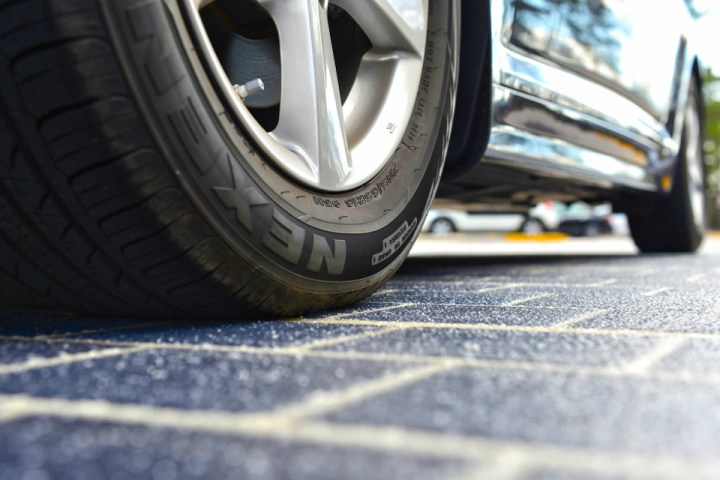
There was much excitement surrounding France’s first-ever solar road when it opened to traffic in 2016, but it appears that the plan to draw energy from the special surface has fallen well short of expectations.
The Wattway, as it’s called, is a 1-kilometer (0.62-mile) stretch of road covered in 2,800 photovoltaic panels in the Normandy village of Tourouvre-au-Perche in the north part of the country.
Despite early hopes that the project could do its bit for a greener environment, the $5 million initiative has apparently turned into an expensive failure, according to a Popular Mechanics report (via Le Monde),
First up, it’s disintegrating. Despite assurances from Colas — the French civil engineering firm that built the road — that it would be durable enough to withstand the weight of large trucks, it seems that the humble farm tractor has presented an altogether greater challenge, with the chunky vehicle reportedly causing some parts of the road’s protective layer of silicon-based resin to break up.
Secondly, the panels have failed to generate the amount of electricity promised by those behind the project. Reports suggest the solar road was built to produce around 150,000 kWh a year, but in 2018 it generated less than 80,000 kWh. Normandy, you see, isn’t known for its year-round sunny climate … because it doesn’t have one. But when the sun does shine, the panels fail to operate at 100% efficiency as they’re positioned flat on the ground rather than angled toward the sun. Fallen leaves and passing vehicles also block the sun’s rays, further reducing the panels’ efficiency.
And as if all that isn’t enough, the road also makes a racket when vehicles drive on it. Noise levels were reportedly so bad that some villagers complained, prompting highway officials to reduce the road’s speed limit in a bid to give locals a bit of peace and quiet.
It’s worth noting that many of the solar road’s failings were suggested by critics as potential weak points prior to the project’s launch three years ago. However, Colas has a number of other solar roads in place, while other companies have also been exploring the space, so we’ll have to wait to see where the technology goes from here.
We’ve reached out to Colas for comment on the current state of its solar road efforts and will update this piece if we hear back.
Dylan Ryan, a lecturer in mechanical and energy engineering at Napier University in Edinburgh, said last year that solar roads are “likely to only be a niche source of power in the future,” adding that even with technological improvements, “it’s likely the performance gap between solar roads and conventional solar will remain.”
Editors' Recommendations
- Tesla reaches settlement with Walmart to bring solar panel suit to an end
- InSight’s solar panels get a spring cleaning from Martian winds


